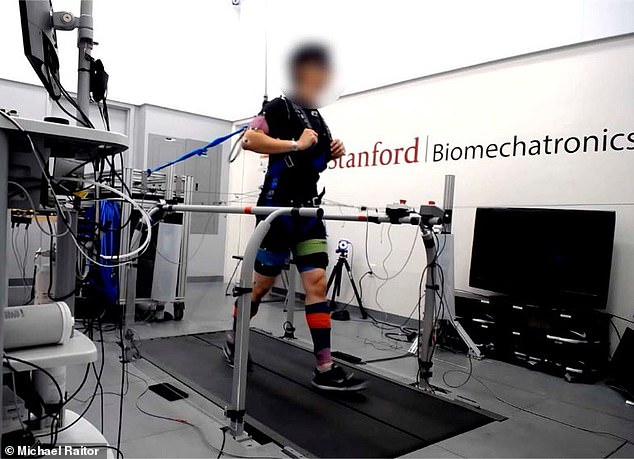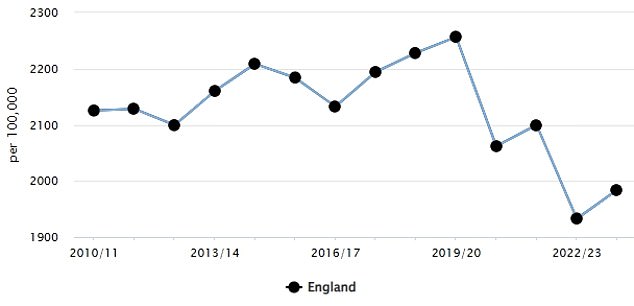- EXPLORE FURTHER: Seniors with an optimistic outlook tend to recuperate more effectively after experiencing falls.
Researchers are now able to determine the likelihood of you experiencing a severe fall in your 60s by analyzing your walking patterns when you're in your 20s.
Injuries and fatalities among elderly individuals in the UK are frequently caused by falls.
According to official statistics, one-third of individuals aged 65 and older experience a fall annually in Britain, making such accidents the leading reason for fatal injuries within this age bracket.
Falls are also the primary reason for elderly individuals visiting accident and emergency departments across the country, with the cost of treatment being quite substantial. NHS approximately £2 billion annually.
However, researchers now believe they might have discovered a method to pinpoint individuals who are more likely to experience dangerous falls long before they get old.
In this research, scholars from Stanford University in the US discovered they could precisely forecast the likelihood of falls using just three straightforward measurements.
These factors included the variability in step widths during walking, the inconsistency in the timing of each step, and the variation in how steadily they placed their feet on the ground.
Writing in the Journal of Experimental Biology The authors stated that each of these measurements had an accuracy rate of 86 percent in forecasting whether someone would subsequently fall during the experiment.

In this research, ten healthy participants ranging from 24 to 31 years old walked on a treadmill as they were filmed by eleven specialized cameras set up in front of them.
With this equipment, researchers managed to obtain accurate information about each individual's walking pattern from various perspectives.
During the subsequent phase, every volunteer had to run on the treadmill once more; however, this time they wore bulky ankle weights, a visual obstruction mask, and were subjected to disruptive air blasts.
This set of equipment was created to replicate the diminished equilibrium and reduced reflexes associated with aging when it comes to falling.
Upon analyzing the outcomes, they discovered that participants exhibiting the greatest variability in step width, step timing, and foot placement during the initial phase were more prone to falls in the subsequent stage.
The group pointed out that in numerous nations, medical professionals usually evaluate an individual’s walking ability and likelihood of falling only once mobility problems begin to surface.
Jiaen Wu, who led the research, stated that the information collected in their study might assist in forecasting potential falls among elderly individuals prior to them being endangered.
'The major hurdle is that minor balance issues often go undetected until an actual fall occurs,' they explained.

They noted that preventing falls from happening at all could potentially save numerous lives and spare healthcare systems significant financial burdens.
The latest research builds upon a recent study indicating that older individuals with an optimistic outlook on aging were more prone to bounce back effectively if they experience a fall .
Approximately every third person who is 65 years old or older experiences a fall at least once annually, with this statistic rising to about half of those aged 80 and above, as stated by the National Institute for Health and Care Excellence.
According to official statistics, there were nearly 220,000 emergency department admissions due to falls among individuals aged 65 and older in England during the most recent fiscal year.
Hip fractures due to falls can result in declining mobility for elderly individuals, increasing their likelihood of subsequent accidents and injuries.
Elderly individuals are at higher risk of falling because they often experience a decline in strength and resilience as they get older, making recovery from such incidents more difficult for them.
Read more


%20(1024%20x%201024%20piksel)%20(5).png)
%20(1024%20x%201024%20piksel)%20(1).png)
0 Comments